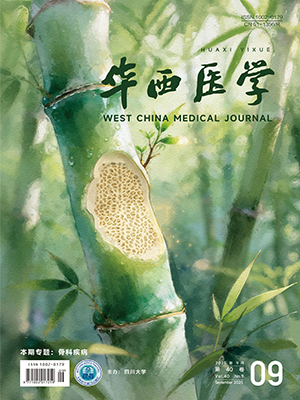As the largest barrier organ in the human body, once skin defect occur, it not only affects appearance but also cause clinical problems such as infections. Traditional skin defect repair methods, such as autologous skin transplantation and allogeneic skin transplantation, have shortcomings such as limited donor sources, potential immune rejection, and limited repair effects, and are difficult to meet the individualized treatment needs of complex wounds. Bioprinting technology, as a breakthrough approach in tissue engineering in recent years, can accurately control the spatial distribution of seed cells and biomaterials within scaffolds based on digital models, achieving personalized biomimetic structure of skin tissue. This article aims to summarize the application and research progress of bioprinting technology in skin tissue engineering, providing a theoretical basis for its further clinical application.
Citation: ZHE Man, LU Rongying, MA Shanshan, ZHAO Yinqi, YANG Guang, XING Fei. Application and research progress of bioprinting technology in skin tissue engineering. West China Medical Journal, 2025, 40(9): 1512-1517. doi: 10.7507/1002-0179.202406030 Copy
Copyright © the editorial department of West China Medical Journal of West China Medical Publisher. All rights reserved




